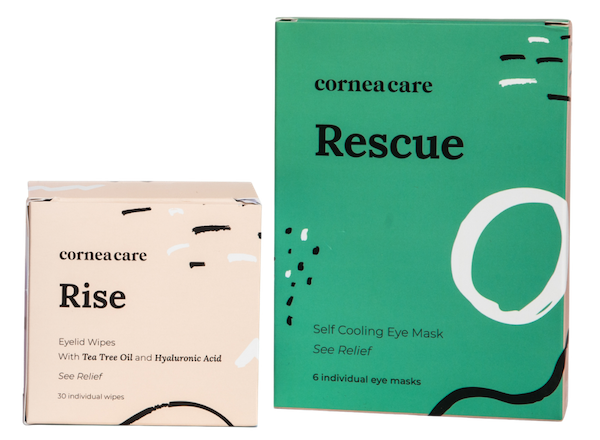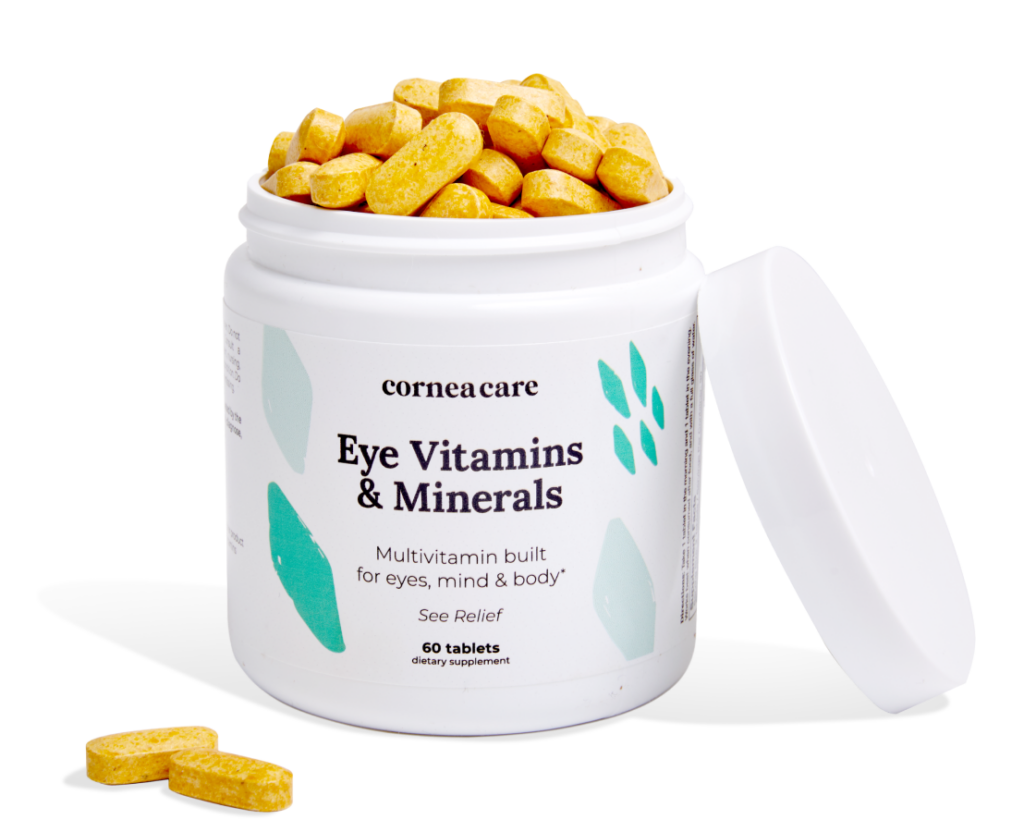Dry eye disease is a very common condition affecting over 30 million adults in the United States alone. There are a number of causes of dry eye disease.
If you have dry eye disease, you may experience burning or stinging, blurry vision or even excessive tearing.
Treatment options can make your dry eyes more comfortable and ease the symptoms of dry eye disease. These may include simple lifestyle changes, environmental adjustments, eyelid hygiene and the use of eye drops.
In this article, we’ll cover the causes of dry eye disease and some steps you can take to improve your dry eyes.
Key Points
- The main causes of dry eye disease are not enough tears (aqueous deficient dry eye) or tears evaporating too quickly (evaporative dry eye).
- In most cases, people with dry eye disease have both decreased tear production and increased tear evaporation.
- Your environment, lifestyle, and overall health can all be factors in causing dry eye disease.
dry eyes seriously?
What Causes Dry Eye Disease?
The causes of dry eye disease, also known as dry eye syndrome, keratoconjunctivitis sicca, and ocular surface disease, fall into two categories. Your dry eye disease may be caused by a decrease in tear production, called aqueous deficient dry eye, or by the rapid evaporation of tears, called evaporative dry eye.1
The most common forms of dry eye disease are typically a mix of aqueous deficient and evaporative, and there are several contributing factors, such as the environment, occupation, ocular diseases, medical conditions, and certain medications.
Eye injuries, corneal scarring and eye surgeries can also lead to both types of dry eye disease.
Symptoms of Dry Eye Disease
There are many symptoms you may experience if you have dry eye disease. These usually affect both eyes and may include:
- Blurred vision
- Redness or burning
- Gritty sensation
- Light sensitivity
- Foreign body sensation
- Contact lenses feel uncomfortable
- Difficulty driving at night
- Watery eyes
When Not Enough Tears Causes Dry Eye Disease
Your tears come from the lacrimal gland, located above your upper eyelid, deep under the skin. Since the lacrimal gland produces your tears, anything that causes it to malfunction will decrease tear production.
Decreased tear production is categorized as aqueous deficient dry eye.
Medical conditions such as Sjögren’s syndrome, an autoimmune disease, can cause inflammation of the lacrimal gland and is associated with dryness of the mouth and eyes.2
Another cause of decreased tear production is a disruption of the connection between the cornea and the tear gland. When working properly, the cornea stimulates the lacrimal gland to produce more tears when it becomes dry. This keeps the ocular surface lubricated, comfortable, and protected.
However, if the link between the cornea and lacrimal gland is disturbed, tear secretion may decrease. This is often caused by eye injury, corneal scarring, or eye surgeries that decrease the sensitivity of the cornea.
Your eye doctor (optometrist or ophthalmologist) can measure your eye’s tear production with a simple test during an eye exam. If your cause of dry eye disease is decreased tear production, lubrication with artificial tears can help supplement low tear volume.
Your eye doctor may also recommend punctal plugs to fill the tear ducts, which can keep tears in your eyes longer.

Starter
Eyelid Hygiene Plan 1
Perfect for eye dryness, burning, itching, pain, crusting/flaking of eyelashes and inflamed eyelids. Free shipping 📦.
Try today - $35
When Evaporating Tears Causes Dry Eye Disease
Your tear film is made up of three layers which work together to lubricate your eyes and prevent tear evaporation.2
The mucin layer is the glue of your tears and attaches to the cornea. The aqueous layer sits on top of the mucin layer and is the water of your tears. Finally, the lipid layer is made up of oils secreted by the meibomian glands and sits on top of the aqueous layer.
Decreased tear production causes the aqueous layer to become deficient, which then leads to tear film instability and rapid tear evaporation.
Increased tear evaporation is known as evaporative dry eye disease.
The most common cause of evaporative dry eye disease is meibomian gland dysfunction.3 There are many causes of meibomian gland dysfunction, though it’s most often related to genetics, environment, age, and gender.
With meibomian gland dysfunction, the glands deposit oils on the eyelids or in the glands themselves.
When the meibomian glands stop secreting oil properly, your tear film’s lipid layer becomes deficient. This causes the other two layers in your tear film to break up and evaporate quickly.
Oil buildup can cause styes and eyelid inflammation, also known as blepharitis.
Your eye doctor can measure tear film instability and recommend treatment options. Artificial tears with oil and lipids can help.
Here at CorneaCare we also recommend good eyelid hygiene including warm compresses, cold compresses and eyelid wipes to improve meibomian gland function.
Environmental Causes of Dry Eye Disease
Your environment can be one of the causes of dry eye disease.
Outdoor factors
High winds or low humidity may make your tears evaporate fast. Poor air quality or prolonged exposure to UV rays from intense sunlight can also lead to dry eyes.
If you live in areas with environmental risk factors, you can make lifestyle changes to improve your dry eye symptoms. Wear sunglasses or eye protection when outside on sunny or windy days, even in the snow.
Indoor factors
While indoors, excessive heat, or sleeping under a fan or in front of an air conditioner could cause your tears to evaporate rapidly.
Other risk factors include low humidity, smoke, and stagnant, poor air quality in the home or workplace.
Using a humidifier, avoiding smoke from cigarettes or wood stoves, and directing fans, heaters, and air conditioning away from your eyes can make a big difference.
Occupational and Lifestyle Causes of Dry Eye
There are factors in your everyday life that can also lead to dry eye disease. Becoming aware of these causes of dry eye disease can help you make simple changes to improve your eye health.
Screentime
The average person spends hours each day looking at a computer screen or other digital device. When you’re looking at a computer screen you blink less and don’t replenish your tear film, leading to dry eye symptoms.4
When you focus your eyes while driving, cooking, reading, or watching television, your blinking naturally decreases.
If your computer screen is above eye level, your eyes open more to look upwards at the screen, which exposes more of your ocular surface to the environment.
Keep your digital device or computer screen below your eye level, make an effort to blink more often, and take regular breaks by looking at an object 20 feet away from you, for 20 seconds, every 20 minutes (the 20-20-20 rule).4
Smoking
Smoking increases your risk of developing dry eye disease. The many chemicals in cigarette smoke can cause irritation, inflammation, and dryness of the surface of the eye.5
Smoking also greatly increases your risk of developing macular degeneration6 and cataracts.7 These eye conditions can lead to severe vision loss or blindness.
To help protect your vision, never start smoking or take action to stop now.
Wearing masks
You may wear a mask on the job or in public settings. While wearing a mask, airflow is directed upwards toward your eyes, leading to rapid tear evaporation. This causes dry eyes and is known as mask-associated dry eye disease.8
Pinch the top of the mask around your nose to reduce the amount of air from your nose and mouth that reaches your eyes. Take breaks from wearing a mask whenever it is safe to do so.

Multivitamin
Eye Vitamins & Minerals
A single multivitamin to address the nutritional needs of your eyes, mind and body. 📦 Free shipping.
Try today - $35
Eye Conditions that Cause Dry Eye Disease
There are several eye conditions and surgeries that can cause or worsen dry eye disease.
Treatment for glaucoma or eye infections
If you have glaucoma, the eye drops used to lower your eye pressure can cause dry eyes.9
Antibiotics used to treat corneal or eye infections can lead to dry eye disease if used for prolonged periods.
These eye drops contain a preservative that can be toxic to the ocular surface. Talk with your eye doctor about your symptoms of dry eye disease if you are using prescription eye drops.
Contact lens use
Contact lens wear is another cause of dry eyes. Millions of people worldwide wear contact lenses. However, many do not follow good contact lens hygiene.
Poor contact lens hygiene can directly injure the cornea, leading to dry eye disease. Contact lenses may also destabilize your tear film and disrupt the connection between the cornea and the lacrimal gland, leading to decreased tear production.
Take steps to use contact lenses safely. Switch to glasses whenever possible, especially when experiencing dry eye symptoms. Try daily disposable lenses.
Eye surgery
Eye surgeries can also cause or worsen dry eye disease by damaging the ocular surface.9
Refractive surgery, such as LASIK, can injure the corneal nerves and the Goblet cells (which secrete mucin for your tear film), and change the shape of the cornea, leading to tear film instability and decreased tear production.
Eye injury
If you experience an eye injury, such as blunt trauma or chemical exposure, the conjunctiva can get scarred.
When the conjunctiva is injured or damaged, its cells may not produce the molecules necessary for the mucin layer. Without mucin, the glue of your tears, the tear film becomes unstable.
When the surface of the cornea is damaged due to eye injury, corneal scarring, or eye surgery, the mucin layer may fail to attach to the surface of the cornea. In the case of dry eye, the aqueous and lipid layers will also have trouble attaching causing the tear film to become unstable and evaporate quickly.
Medical Conditions Linked to Dry Eye Disease
Your overall health can also cause dry eye disease.
Autoimmune conditions, such as Sjögren’s syndrome or rheumatoid arthritis, are associated with dry eyes.
Thyroid problems can manifest with thyroid eye disease, which typically causes dry eyes.
A diet low in vitamins A, B, C, D and E, and omega-3 fatty acids can lead to dry eye disease. Improving your nutrition and including CorneaCare eye vitamins and omega-3 supplements can help fill the nutritional gaps that may cause dry eye disease.
Cancer, dermatitis, rosacea, diabetes, high blood pressure, lupus, and menopause (hormonal changes) are just a few of the many medical conditions associated with dry eyes.
Certain medications have side effects that can cause dry eye symptoms. These include antihistamines, antidepressants, birth control pills, diuretics, decongestants, beta-blockers, chemotherapy, and hormone replacement therapy.9 These medications can either decrease tear production or make your tear film unstable.
Talk with your doctor if your prescribed medications are causing dry eye disease symptoms.
Putting It All Together
While it’s important to know the causes of dry eyes, remember that most forms of dry eye disease have several contributing factors. This is why simple eye lubrication with eye drops or artificial tears, compresses and even prescriptions (cyclosporines and lifitegrast) alone are insufficient.
What’s better is developing a personalized therapeutic plan, making some important environmental and lifestyle modifications, and staying consistent.
What’s Next
Let’s learn about why dry eye disease matters!




